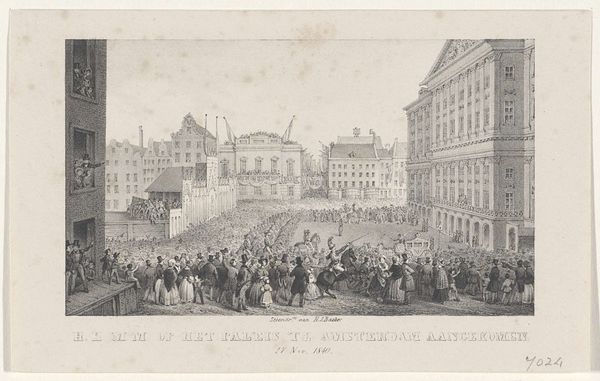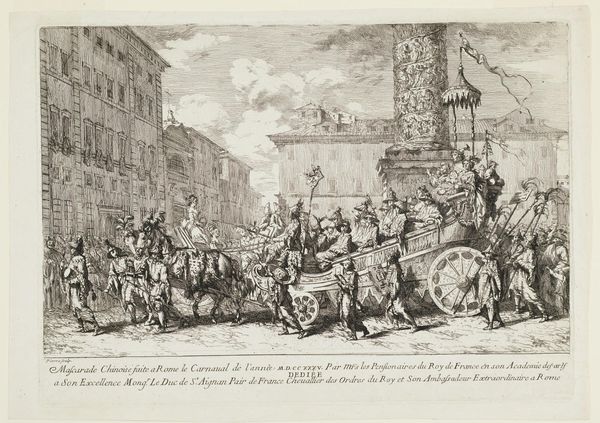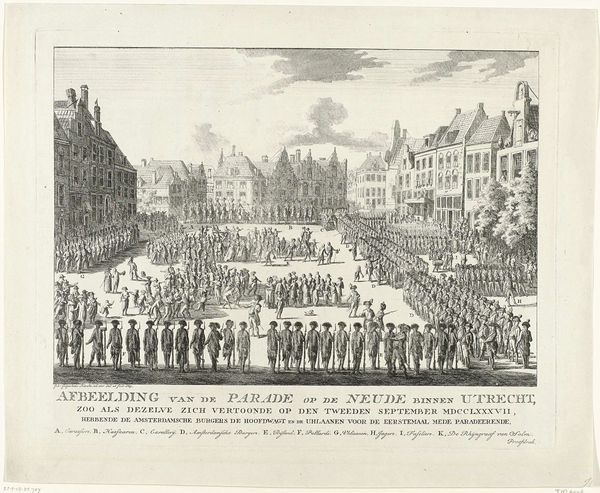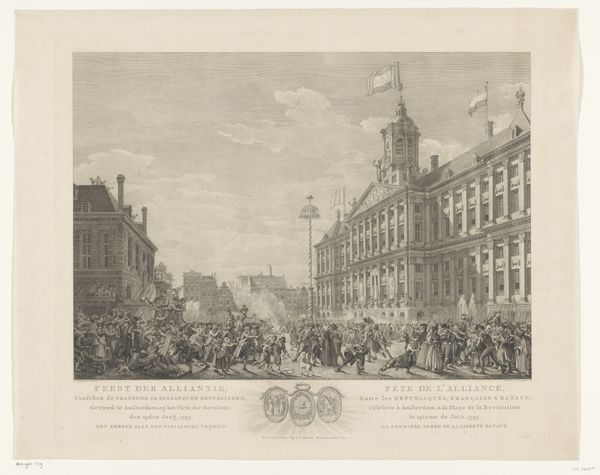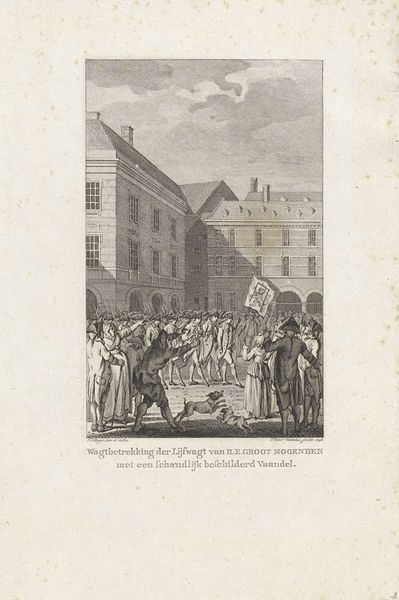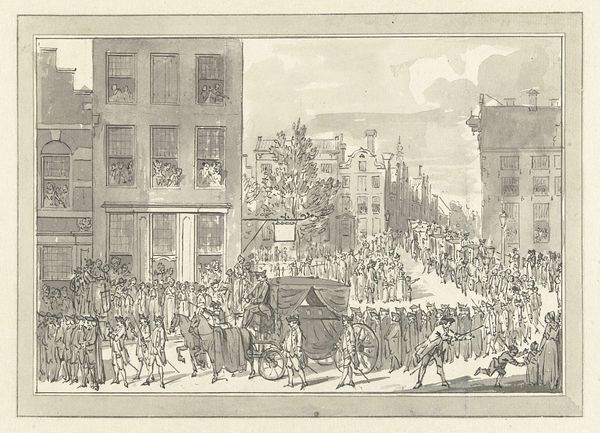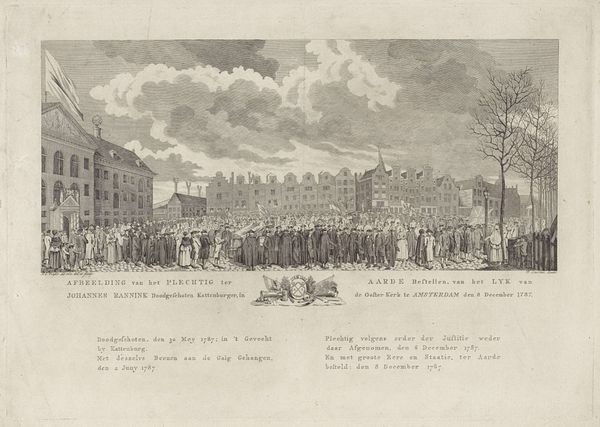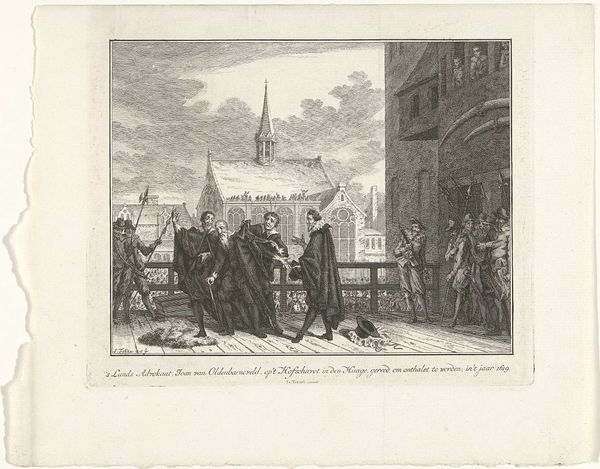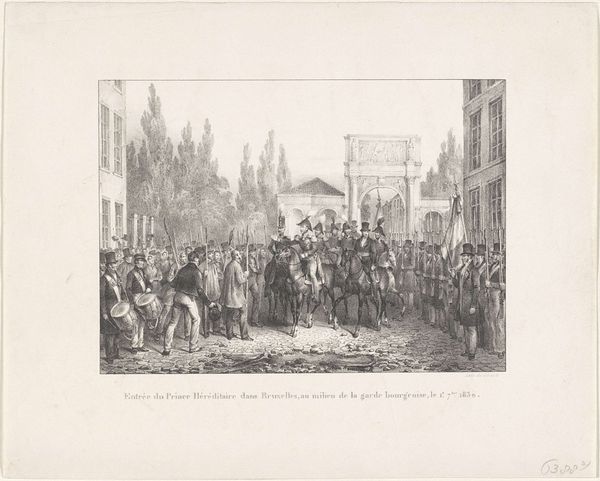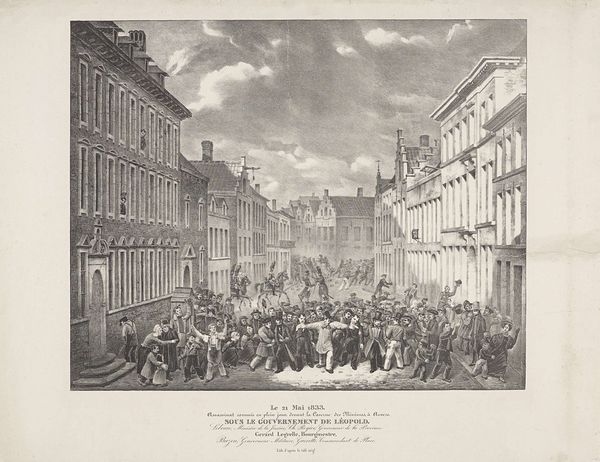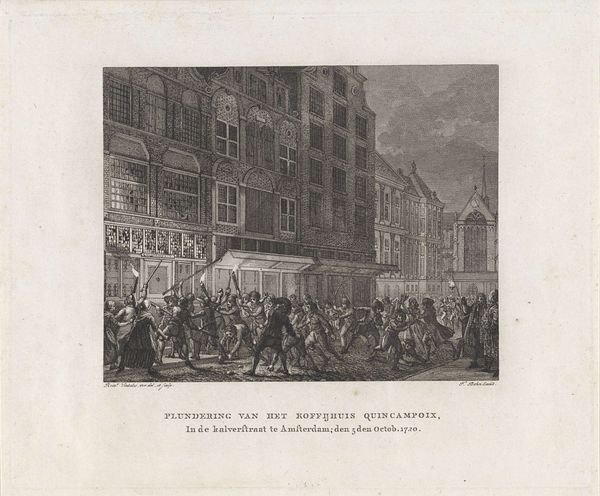
engraving
#
old engraving style
#
romanticism
#
cityscape
#
history-painting
#
engraving
Dimensions: height 275 mm, width 378 mm
Copyright: Rijks Museum: Open Domain
Editor: Here we have "Verovering van de Meir, 1830," or "Conquest of the Meir, 1830," an engraving made between 1830 and 1831 by an anonymous artist. The scene depicts a battle, almost chaotic but the detail is really interesting, all these individual lines used to build the sense of movement, figures, and building volume! How should we interpret this print from a formal perspective? Curator: Precisely. The engraving technique allows us to see the dramatic contrasts in light and shadow—what the Renaissance masters referred to as *chiaroscuro*. How does this distribution of light guide your eye across the composition? Editor: It pulls my eye towards the center, where all the action seems to be focused and away to the architecture either side of this focal point. The building is nicely detailed to emphasise how deep the square is with rows and rows of windows going deep into space, adding to the image perspective, and almost creates depth as we move into space? Curator: Yes. Consider, also, the repetition of shapes—the vertical lines of the buildings are counter-balanced by the dynamism of the figures creating compositional harmony and structure within the chaotic event depicted. And how do these formal elements contribute to the overall meaning? Editor: It feels like a staged play with great detail, there is a real energy about the overall scene within an otherwise regimented townscape in this early 19th century piece. There is an element of drama. Curator: Indeed. This contrast amplifies the subject matter, what could be lost otherwise gets caught within the lines. We’ve seen how closely observing visual aspects reveals structural decisions but also brings attention to what may not have been apparent, bringing another depth to this work and its history. Editor: Right. Thanks, this perspective helps focus not only on what it shows, but on the why and how. It highlights some interesting and otherwise obscure observations.
Comments
No comments
Be the first to comment and join the conversation on the ultimate creative platform.

